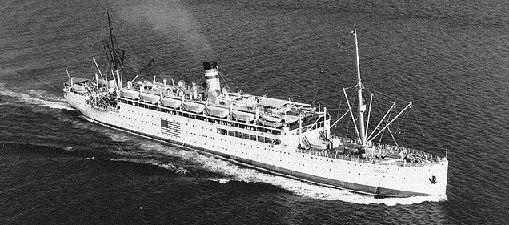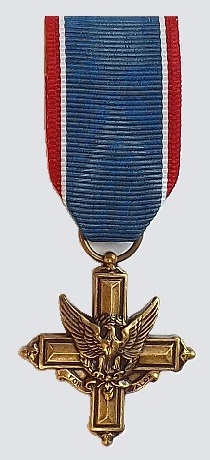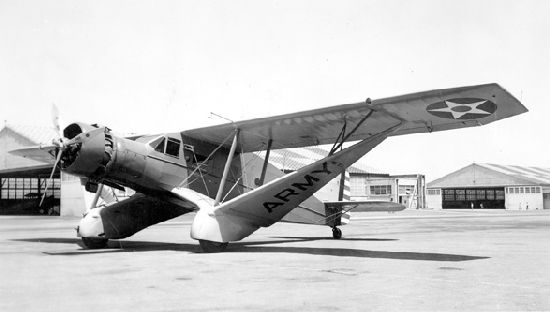Idaho State >
Idaho POWs >
Gooding County, Army and AAF >
Ralph W. D. Brown >
Maj Brown Newspaper Clips >
Maj Brown Diary, Letters and Notes >
Maj Brown National Archives - POW Records
Diary, Letters and Notes on the
Life and Service of
Chaplain Ralph W. D. Brown
Your are on Page 1 - Links Directly to Chapters
Page 1 of 3:
Chapter 1 - Family History and Pre-War Service
Chapter 2 - Pastor Brown Joins the Army Air Forces
Chapter 3 - December 8, 1941 - Manila and the Philippine Islands Attacked
Chapter 4 - "From The Battle Front" In the Field, Bataan, P. I. February 7, 1942
Chapter 5 - A Letter From Prison Camp #1 Cabanatuan, November 6, 1942
Page 2 of 3:
Chapter 6 - Easter and - - - - Surrender
Chapter 7 - "THE MARCH OF DEATH"
Chapter 8 - Cabanatuan - Corregidor Camp
Chapter 9 - A letter written in Cabanatuan Prison Camp #1
Chapter 10 - In Bilibid Prison, Manila
Page 3 of 3:
Chapter 11 - The Cruise of Death - 50 Days in Hell
Chapter 12 - Chaplin Ralph Brown is Called "Home"
Chapter 13 - Letter From Chaplain Duffy to Mrs. Brown
Chapter 14 - Letter From 2nd LT Frank Forni To Mr. Arthur Brown
Chapter 1 - Family History and Pre-War Service
Ralph W. D. Brown was born October 13 1903, at Bay Center in Washington State to Arthur W. and Ada M. Brown. He graduated from Vancouver High School in 1922 and graduated from the University of Washington in 1926. After completing studies at Drew Theological Seminary in 1931, he visited Europe and the Holy Lands.
From 1931 to 1936 Ralph Brown was pastor at the Highland Park and Asbury Methodist Churches in Seattle. In 1936 he and his wife Margaret, moved their family to Gooding, Idaho, where he pastored the Gooding United Methodist Church from August 1936 to September 1937. (Source Data - PDF Page 1)
Chapter 2 - Pastor Brown Joins the Army Air Forces
In 1937 as the clouds of war continued to grow around the world, Pastor Brown chose to join the U. S. Army Air Forces as a Chaplain. He was commissioned as a First Lieutenant at Fort McIntosh, in Laredo, Texas.
 In late 1939 or early 1940, Chaplain Brown received orders to be transferred to Fort Stotsenburg-Clark Army Air Field, located 50 miles North of Manila, in the Philippine Islands. Captain Brown would assume the position of Post Chaplain for Fort Stotsenburg. On February 14, 1940, Ralph, Margaret and their three children, Warren, Peggy and Richard, arrived in Manila after having crossed the Pacific on the USS Grant (AP-29), a US Navy transport ship. (US Navy Photo)
In late 1939 or early 1940, Chaplain Brown received orders to be transferred to Fort Stotsenburg-Clark Army Air Field, located 50 miles North of Manila, in the Philippine Islands. Captain Brown would assume the position of Post Chaplain for Fort Stotsenburg. On February 14, 1940, Ralph, Margaret and their three children, Warren, Peggy and Richard, arrived in Manila after having crossed the Pacific on the USS Grant (AP-29), a US Navy transport ship. (US Navy Photo)
Fort Stotsenburg, and the adjacent Clark Army Air Field, was the location of the Philippine Department's 26th Cavalry Regiment, 86th Field Artillery Regiment, and 88th Field Artillery Regiment; along with the Philippine Division's 23rd and 24th Field Artillery Regiments. Also based here were the 12th Ordnance Company and a platoon of the 12th Quartermaster Regiment.
Units assigned to Clark Army Air Field in late 1941 included the Far East Air Force V (5th) Bomber Command, 20th Pursuit Squadron P-40Bs, 14th Bombardment Squadron B-17s, 24th Pursuit Group P-40Bs, 19th Bombardment Group B-17s, 30th Bombardment Squadron B-17s, and the 93rd Bombardment Squadron B-17s.
As tension between Japan and the United States continued to build in the spring of 1941, Margaret Brown and the children returned to the United States in May 1941.
Chapter 3 - December 8, 1941 - Manila and the Philippine Islands Attacked
Captain Brown was on Clark Army Air Field on the first day of the war. His citation for the award of the Army Distinguished Service Cross document his selfless actions on that tragic day:
Award of Distinguished Service Cross
RALPH W. D. BROWN (O-20862) (Captain) Chaplain

For extraordinary heroism in action at Clark Field, Fort Stotsenburg, Pampanga, Philippine Islands, on December 8, 1941. While an intensive and sustained aerial bombardment and strafing attack were inflicting heavy casualties on personnel at his station, Chaplain Brown, under severe fire and without consideration of his own safety, drove in his personal automobile through the area being attacked, collecting wounded, administrating first aid and transporting casualties to the Ft. Stotsenburg Hospital. In spite of enemy attacks recurring at short intervals, this officer made no fewer than six such trips, each with a full load of such casualties, in imminent danger from enemy bombardment and machine gunning. His actions beyond the reasonable demand of his duty, saved many of the wounded from death or further mutilation.
Chaplain Brown's intrepid actions, personal bravery and zealous devotion to duty exemplify the highest traditions of the military forces of the United States and reflect great credit upon himself, his unit, and the United States Army.
By Command of General MacArthur;
R. K. Southerland
Maj. Gen., GSC., Chief of Staff
Dated January 31, 1942
Headquarters, U.S. Army Forces in the Far East, General Orders No. 18 (1942)
Chapter 4 - "From The Battle Front"
In the Field
Bataan, P. I. February 7, 1942
Saturday nite and I sit in my tent, flash light in hand. I have been all over the peninsula this week from one battle front to the other. We are doing all right. Our boys are in good spirits and always ready for a chapel service whenever they can leave their position and assemble in camp. I got into a service two hours late and found a Commander of another camp waiting to beg me to come and hold services in his camp. That happens over and over. I meet the boys we knew from the many different outfits all over and the one question is, "When are you coming to our camp?" When we get to a camp they turn out in mass and listen very carefully. I generally hold a communion service after each preaching service and a good percentage of the boys commune. They are also reading their Bibles. Hundreds of boys are asking for Scriptures which I don't have. I have given out over 2,000 now in the last year and could have given another 2,000 if I had them. These are certainly experiences that will never be matched or repeated (I hope). I myself am well and going strong. I have to stop and rest every few days. I was surprised how much energy is consumed preaching 3 or 4 times a day and travelling the rough roads and trails between. I have driven cars over trails I didn't used to think I could hike over.
(Start of PDF Page 2)
(The) Old Ponty finally gave up. I burned the motor out after a stone put a hole in her oil pan. I put 2,000 miles on that old car in a month down here on this peninsula so you can see I have kept going. I am now driving a V8 Ford, I carry my roll of bedding with me and whatever camp I get caught in at dark, there I sleep. Usually have a sing if conditions permit. I make a special effort on Sunday and usually get in 5 or 6 services. I will try to make 6 tomorrow, 7:45, 10:30, 12:00, 2:00, 3:30 and 4:30. I'll make that if the Nip bombers don't object.
Well, don't fear, I'll be back. God is doing a good job looking after me and I'll do my best working for him.
Chapter 5 - A Letter From
Prison Camp #1 Cabanatuan
November 6, 1942
(Two and one half years en route)
I want to give you my story this far as much as I can because I may not be able to later. Yesterday another big detail left for Japan. We had a paper (Jap propaganda sheet) telling of the sinking of a Japanese transport carrying Prisoners of War. So any such trip won't be any too safe. I don't mean I'm scared. I've been divinely cared for too well to have fear. I just go ahead as events take me and God leads me and say His will be done. But should trouble be ahead I'd like to get this much of the story to you while there is still a chance.
The Battle of Bataan
We were bombed incessantly at Clark Field from the 8th till the 24th of December, 5 or 6 raids a day. I was all over the place visiting and encouraging our men. I refused to get down or hide till the planes were actually over me. Some of the Doctors got mad at me because I wouldn't hide with them every time the siren blew. I made two trips to Manila sending radios for our men (and myself). Sent off more than $4,000.00 worth. I went back each nite for a week and was last there December 31st. I had to abandon my foot locker and all my things except my field uniform.
I was post Chaplain the last two weeks at (Fort) Stotsenburg. January 1st (1942) I was assigned as senior Chaplain of the Far East Air Forces with headquarters at 169 (Little Bagio) in Bataan. A few weeks later Gen. George moved me to Bataan Field Km 156 in Bataan where I lived until the nite of the surrender. April 9th I covered all of Bataan serving the beaches and fields and checking with my three chaplains on the front lines frequently. I covered 2000 miles on Bataan roads in January. I would leave my tent Monday, get back Saturday. Held an average of two services a day and six on Sunday. I ate and slept with whatever outfit I was with when the time came. I haven't been in a bed since December 23rd, 1941. Most of the time I've slept on the ground or on boards since the capture. I have one O.D. blanket. We're very thankful for a warm climate.
Holy week I held services and hundreds of men took part. We didn't realize how close we were to the end. Our men were in bad shape. Our medicine had given out and our airman were trying to fly in quinine in an old 11-year-old, 100 miles an hour, without a gun on it, Bellanca monoplane. I got a bad case of dysentery on Bataan but sulphathiazal(sic) [sulfathiazole?] saved me. Our meals were cut in two-a-day January 1st. Supplies began to run low by the end of January. The middle of February bread ran out. Meat of any kind was soon gone. Sugar and salt were gone, we ate RICE. By the middle of March we were getting very small servings of that. Occasionally we got a piece of caraboa or horse or mule. A small piece for each camp. I know what it is to go to bed night after night with that gnawing ache in my middle because I had almost nothing to eat that day.

Early 1930s Army Bellanca C-27C Airbus - Monoplane (US Army Photo)
Go To Chapter 6 - Easter and - - - - Surrender
Idaho State >
Idaho POWs >
Gooding County, Army and AAF >
Ralph W. D. Brown